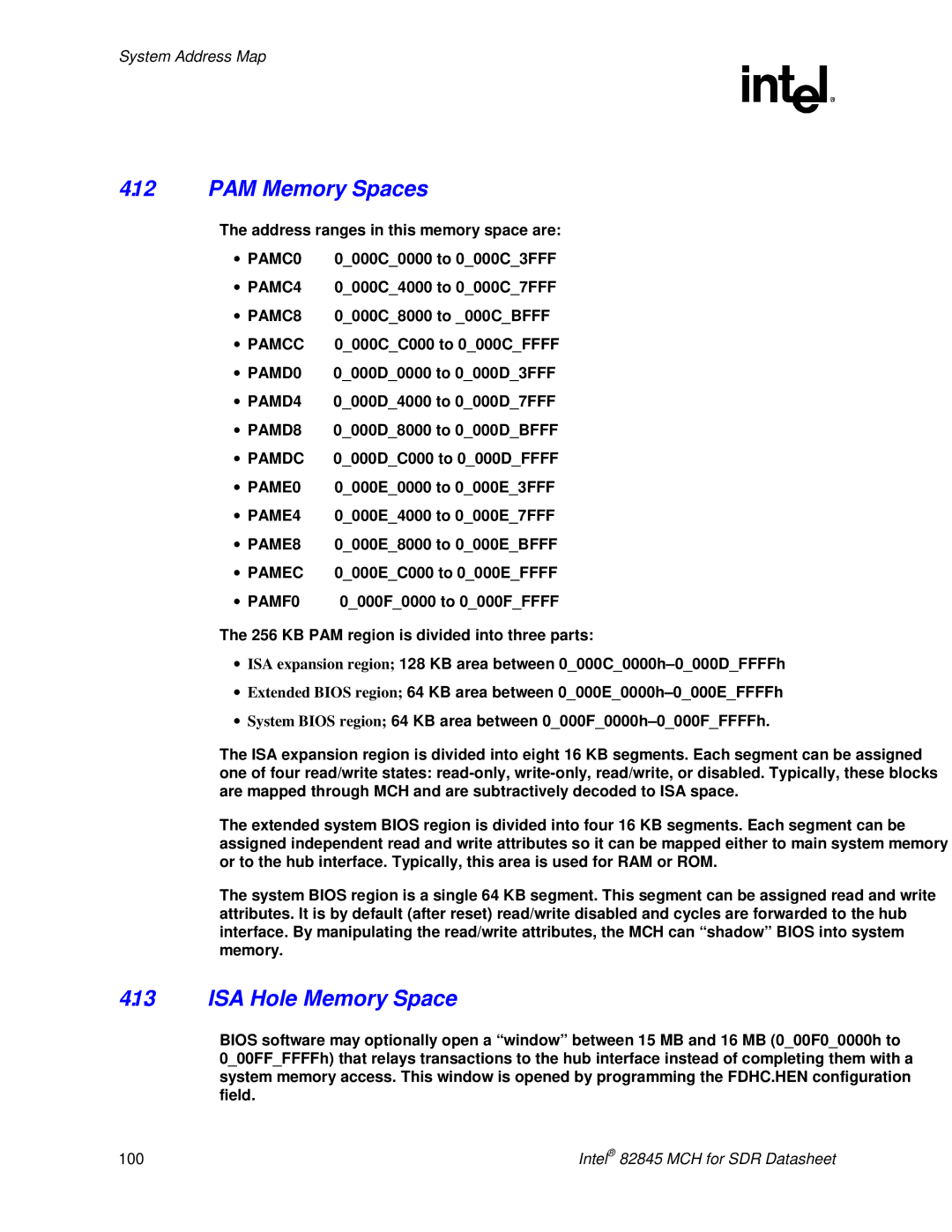System Address Map
R
4.1.2PAM Memory Spaces
The address ranges in this memory space are:
• | PAMC0 | 0_000C_0000 to 0_000C_3FFF |
• | PAMC4 | 0_000C_4000 to 0_000C_7FFF |
• | PAMC8 | 0_000C_8000 to _000C_BFFF |
• | PAMCC | 0_000C_C000 to 0_000C_FFFF |
• | PAMD0 | 0_000D_0000 to 0_000D_3FFF |
• | PAMD4 | 0_000D_4000 to 0_000D_7FFF |
• | PAMD8 | 0_000D_8000 to 0_000D_BFFF |
• | PAMDC | 0_000D_C000 to 0_000D_FFFF |
• | PAME0 | 0_000E_0000 to 0_000E_3FFF |
• | PAME4 | 0_000E_4000 to 0_000E_7FFF |
• | PAME8 | 0_000E_8000 to 0_000E_BFFF |
• | PAMEC | 0_000E_C000 to 0_000E_FFFF |
• | PAMF0 | 0_000F_0000 to 0_000F_FFFF |
The 256 KB PAM region is divided into three parts:
•ISA expansion region; 128 KB area between
•Extended BIOS region; 64 KB area between
•System BIOS region; 64 KB area between
The ISA expansion region is divided into eight 16 KB segments. Each segment can be assigned one of four read/write states:
The extended system BIOS region is divided into four 16 KB segments. Each segment can be assigned independent read and write attributes so it can be mapped either to main system memory or to the hub interface. Typically, this area is used for RAM or ROM.
The system BIOS region is a single 64 KB segment. This segment can be assigned read and write attributes. It is by default (after reset) read/write disabled and cycles are forwarded to the hub interface. By manipulating the read/write attributes, the MCH can “shadow” BIOS into system memory.
4.1.3ISA Hole Memory Space
BIOS software may optionally open a “window” between 15 MB and 16 MB (0_00F0_0000h to 0_00FF_FFFFh) that relays transactions to the hub interface instead of completing them with a system memory access. This window is opened by programming the FDHC.HEN configuration field.
100 | Intel® 82845 MCH for SDR Datasheet |
